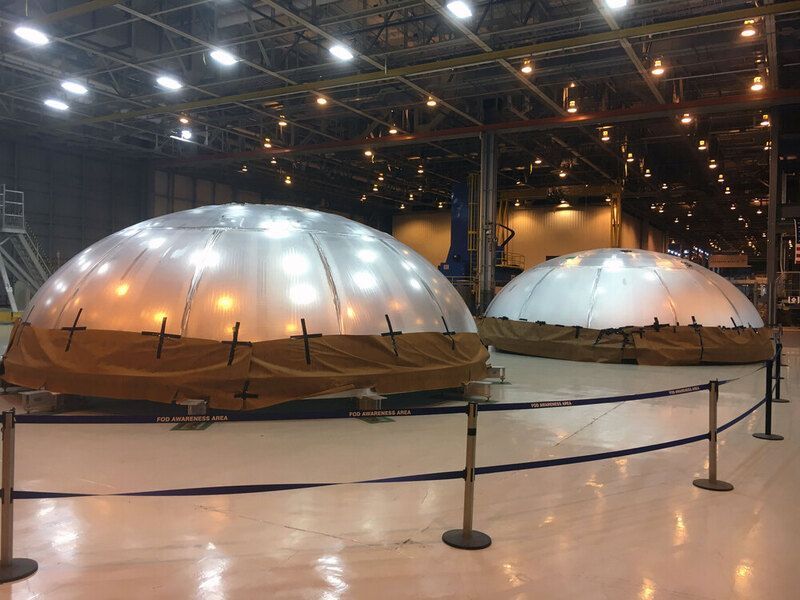Pressure vessels have been around since the beginning of the industrial revolution. They can be used to store higher volumes of products than normal atmospheric pressure, and since pressure lowers the boiling point, pressure vessels can also be used for faster chemical reactions or with lower energy costs. Otherwise, they may be used in the food, pharmaceutical and chemical industries, and in nuclear energy, both to generate electricity and to store liquids and gases. With such a diverse range of applications, the types of pressure vessels used and the types of welding used in pressure vessels are very diverse. The main thing pressure vessels have in common is that they store large amounts of potential energy. A flaw or weakness in a ship can cause the ship to malfunction and release all of its energy in an explosion. Consequently, it is important that the welding of pressure vessels is reliable and without defects. The type of weld used to create a pressure vessel is determined by the purpose of that pressure vessel.
Welding pressure vessels
The main point for welding pressure vessels is the contents under pressure. There is a long history of poorly constructed or poorly maintained pressure vessels experiencing loss of containment and resulting explosions. Pressure vessel explosions are commonly thought of as a problem in the early industrial era, but they still occur regularly. Among other natural disasters, 2020 has so far seen an explosion at a paper mill, as well as a fatal explosion during the testing of a high-pressure guacamole maker. These incidents show the importance of quality welding. Of the events listed above, the guacamole maker is probably made to meet the most exacting requirements. It was designed and made so that the food inside it is free from industrial pollutants as well as pressure. This limited the welding processes that could be used to those whose final welds could meet food hygiene requirements. The biopharmaceutical industry and the semiconductor industry have similar cleanliness requirements that limit the types of welds used in pressure vessels built for those industries.
Types of welding used in pressure vessels
Pressure vessels are almost always spherical or cylindrical, as this shape has no corners that can create stress points in the structure. To contain high-pressure products, pressure vessels are almost always constructed using metal 3 mm (about ⅛ inch) or thicker.
The edges of plates used to make a pressure vessel are usually machined to create an angled bevel that allows the weld root passage to penetrate completely through the joint. When two of the component plates are placed together, they form a deep V or U-shaped groove. When a root pass joins two planes, subsequent passes fill the groove with metal, resulting in a smooth, continuous expanse of uniform or nearly uniform metal. It is almost the same welding process used in large bore pipe welding and narrow groove welding process. Familiarity with these two types of welding can give welders and welding supervisors a good idea about how to weld pressure vessels.
The following types of welding are used to weld pressure vessel connections:
Shielded metal arc welding (SMAW)
In this welding process, a consumable electrode with a flux coating is used. It is often considered the default form of arc welding. It is very portable and the equipment is cheap and readily available. However, it requires high skill and the quality of the resulting welds depends on the skill of the welder
Flux Core Arc Welding (FCAW)
In this method, a consumable wire electrode with a flux core is used. In the formation of the weld, it is similar to the shielded metal arc welding, but due to the continuous feeding of the wire, it requires less skill to work.
Gas metal arc welding (GMAW)
This method includes welding using continuous wire electrode and inert shielding gas. It is one of the easiest welding processes to perform and produces welds that are cleaner than SMAW or FCAW. However, it is known that unpredictable fusion errors are its weakness, which do not occur with the above processes.
Gas Tungsten Arc Welding (GTAW)
In this method, tungsten electrode and inert shielding gas are used. Produces very clean welds with excellent fusion and penetration, but is a slow and laborious process. This makes it a challenge to fill the required volume to perform pressure tank welding.
Submerged arc welding (SAW)
In this method, the weld is immersed in the flux to protect it from oxygen and other gases in the atmosphere. It is a clean welding process with a high deposition rate. However, this is not a portable and ready-made process.
Among the types of welding that are used in pressure vessels, the welding that is selected for a particular project must match the needs of the product that the pressure vessel stores or produces and the pressure at which the product is held. In the oil industry, pressure vessels are kept at relatively low pressures, and while corrosion can be an issue, health considerations are not. As a result, faster and more useful processes such as SMAW and FCAW are often used.
In higher specification projects with higher pressures, welding processes that provide more consistent results, such as gas tungsten arc welding or shielded metal arc welding, are more commonly used. In industries where both pressure and hygiene are major concerns, it is most likely to be welded using GTAW, as it provides a much cleaner and smoother weld than any other type of welding. Due to the amount of welding that a pressure vessel requires, it is likely to be very time consuming if done manually. Mechanized welding processes such as orbital welding can help increase the speed of GTAW welding used in pressure vessels.
Using circuit welding for welding pressure vessels
Orbital welding was developed due to the need to create high quality welds on hydraulic and aviation pipes for aerospace projects. The cylindrical nature of these welds presents a challenge for manual welders, and pressure changes as the aircraft altitude changes cause leaks. It successfully produced high quality welds that maintained integrity through these extreme pressure changes. Since then, it has been used to create high-quality welds in process piping and pressure vessels for the petroleum, biopharmaceutical, semiconductor, and other industries.
Circuit welding is only one type of welding that is used in pressure vessels, but it is the best choice for welding pressure vessels with high requirements for cleanliness and strength. The biopharmaceutical and semiconductor industries provide two examples of applications that can benefit from the compatibility and hygiene of circuit welding. As product manufacturing requirements become more stringent and public and regulatory agencies become even less accident tolerant, the value of GTAW orbital welding in pressure vessel construction increases.
In this article, we introduced the types of welding used in pressure vessels. Petrosazeh Beinolmelal Aram Co provides fixed equipment design services such as pressurized spherical tank, atmospheric cylinder tank, tower, heat exchanger, condenser, etc. Contact the collection for expert advice and implementation of all types of projects.


